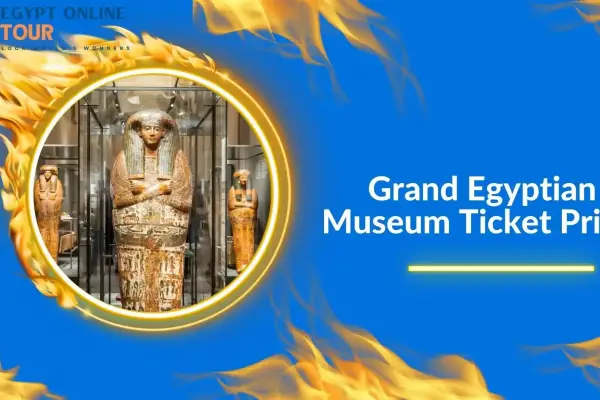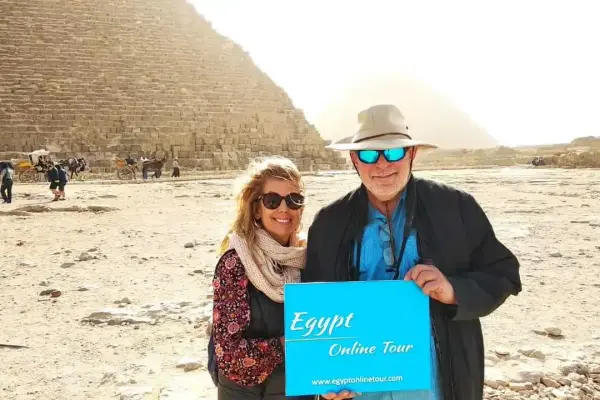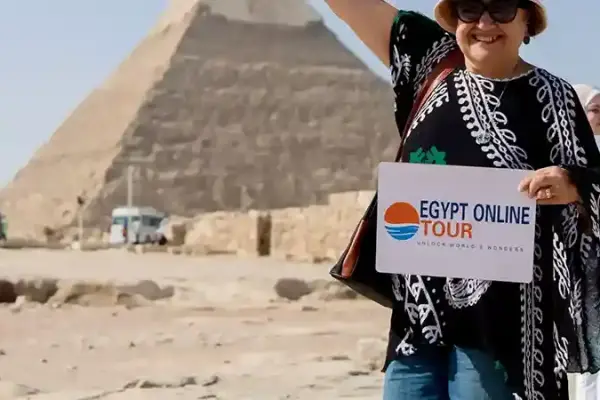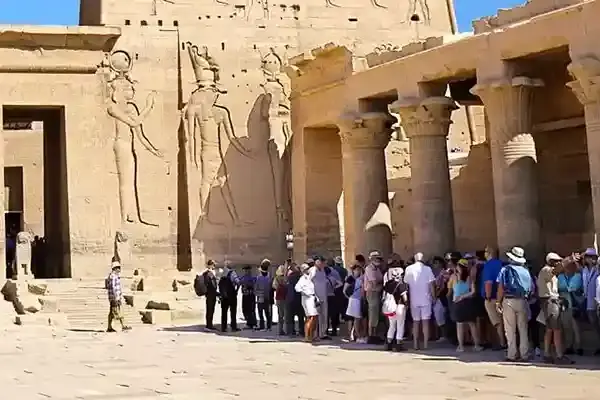When was the Great Sphinx built? It’s a question that resonates deeply across the pages of history. This enigmatic monument, with its lion's body and human head, has captivated people for centuries. But pinning down its exact age is a bit like solving an ancient riddle. Did you know that according to a 2023 study by the Egyptian Ministry of Tourism and Antiquities, over 90% of visitors to the Giza Plateau consider the Sphinx a must-see? Let's dive into the mystery and explore the fascinating story of this ancient wonder.
Table of contents [Show]
- Who Damaged the Great Sphinx? The Truth Revealed
- What is under the Sphinx?
- Who built the Sphinx? Unraveling the Mystery
- When Was the Great Sphinx Built?
- Is the Sphinx 26000 years old in Egypt? Debunking the Myth
- When did the Sphinx lose its nose? Solving the Mystery
- Can you go inside a sphinx?
- How old is the Sphinx?
- Was the Sphinx built before the pyramids?
- Whose face is on the Sphinx?
- Did the Sphinx Originate with Khufu? Exploring the Theories
- What is the best time to visit the Egyptian Plateau?
- What Was The Original Name Of The Sphinx
- Summary
Who Damaged the Great Sphinx? The Truth Revealed
It's a common misconception that the Great Sphinx of Giza was destroyed. In reality, it's still standing! But, like any ancient monument, it's faced its fair share of damage over time. Who, then, is responsible for its scars?
Nature's Fury
First things first, the Sphinx is incredibly old—we're talking thousands of years! Naturally, wind and water have worn away at its surface. Plus, the scorching desert sun and freezing nights have caused the stone to crack and crumble.
Human Mischief
Sadly, humans have also played a part in damaging the Sphinx. There's plenty of evidence of vandalism throughout history. Even some attempts to restore it might have accidentally caused more harm than good.
Target Practice?
Believe it or not, Mamluk soldiers in the 14th century actually used the Sphinx for target practice! This caused significant damage, especially to its face.
The Missing Nose
One of the most famous aspects of the Sphinx’s damage is the missing nose. Contrary to the myth about Napoleon's soldiers, the nose was most likely destroyed in 1378 CE by a Sufi zealot, Muhammad Sa'im al-Dahr, as an act against idol worship.
Time Takes Its Toll:
In the end, the biggest threat to the Sphinx is simply the passage of time. Even with today's conservation efforts, it's slowly deteriorating.
So, while the Sphinx isn't completely destroyed, it definitely shows signs of wear and tear. By the way, did you know the Great Sphinx was built way back in the Old Kingdom, around 2500 BC, during the reign of Pharaoh Khafre? If you're ready to see this historic marvel and explore Egypt’s incredible past, check out this 8-Day Pyramids & The Nile by Air for an unforgettable adventure with Egypt Online Tour.
What is under the Sphinx?
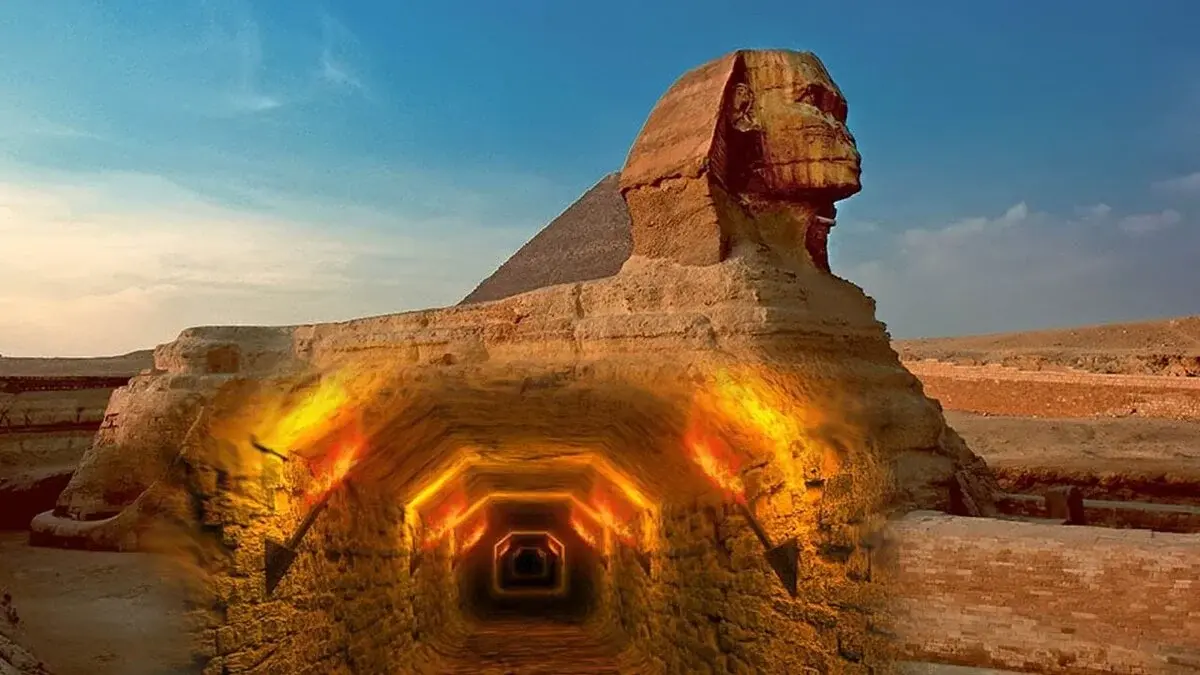
The Great Sphinx of Giza has captivated people for centuries. But what lies beneath this enigmatic monument? Innumerable hypotheses and stories have been sparked by this question. Here's what we know:
Ancient Bedrock
First and foremost, the Sphinx sits on solid limestone bedrock. This is the same material the Sphinx itself is carved from.
Mysterious Tunnels and Chambers
There are indeed tunnels and chambers beneath the Sphinx. Some are natural formations caused by erosion. Others were likely created by the ancient Egyptians. What were they used for? That remains a mystery!
The "Hall of Records" Legend
This mythical chamber supposedly holds ancient knowledge and secrets. But there isn't any solid proof to back up this assertion. One enduring legend speaks of a hidden "Hall of Records.
Ongoing Exploration
Even today, researchers continue to explore the area beneath the Sphinx. They use non-invasive techniques like ground-penetrating radar to investigate without causing damage. Perhaps one day, they'll uncover more of the Sphinx's hidden secrets.
While we don’t have all the answers, it’s clear that the space under the Sphinx is a source of fascination. It holds clues to the past and maybe even some surprises. If you’re eager to dive deeper into Egypt’s mysteries, consider joining Egypt Online Tour’s 12-day Pyramids, Nile, and Sinai Tour for an unforgettable journey through ancient wonders.
Read about: Pyramids land private tours
Who built the Sphinx? Unraveling the Mystery
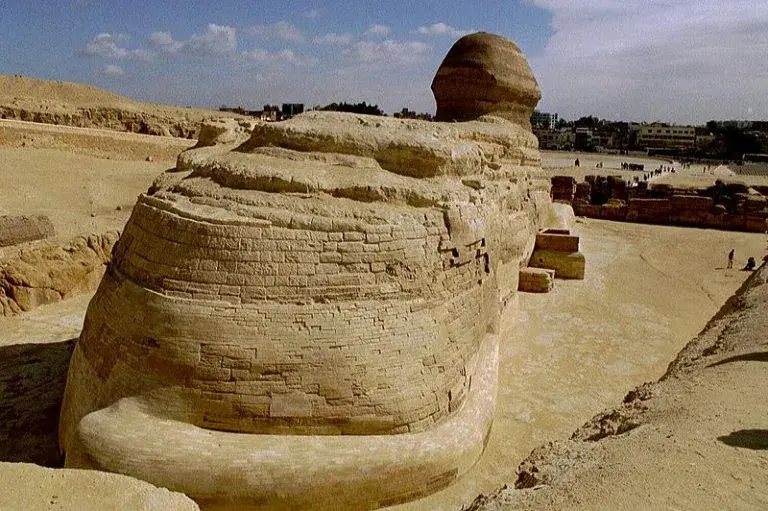
One famous representation of ancient Egypt is the Great Sphinx of Giza. But who built this magnificent creature? It's a question that has puzzled historians and archaeologists for centuries. Here's what we know:
Pharaoh Khafre
Most experts believe the Sphinx was built by Pharaoh Khafre. He ruled during the Old Kingdom, around 2500 BC. This is based on its location near Khafre's pyramid and some stylistic similarities.
A Family Affair?
However, some researchers have other ideas. They suggest that Khafre's father, Khufu, might have started the project, or that it could even be older.
Why Was It Built?
No one knows for sure! It could have had a religious function, represented royal authority, or protected Khafre's pyramid. Maybe it was all three of them combined!
Skilled Artisans
Regardless of who commissioned it, the Sphinx was undoubtedly built by highly skilled Egyptian artisans and laborers. They carved this monumental statue from a single piece of limestone, showcasing the advanced architectural skills of ancient Egyptians.
A Symbol of Power
Regardless of who built it, the Sphinx was clearly a symbol of power and authority. It showcases the incredible skill and artistry of the ancient Egyptians.
While some mysteries about the Sphinx's construction remain, this awe-inspiring monument continues to fascinate and inspire. And if you’re curious to experience Egypt's ancient wonders, consider a 10-day round-trip Nile cruise and pyramids tour with Egypt Online Tour for an immersive journey through history.
Read about: Did Thoth Built The Pyramids
When Was the Great Sphinx Built?
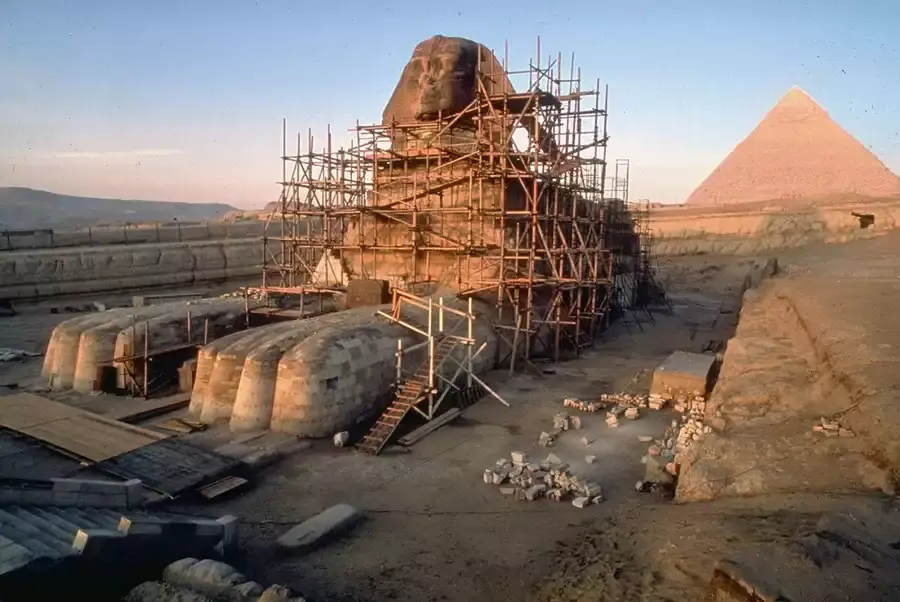
For ages, historians have been fascinated by this question.. Here's what we know:
Old Kingdom
Most experts agree that the Sphinx was built during the Old Kingdom period of ancient Egypt.
Reign of Khafre
More specifically, it's believed to have been constructed around 2500 BC, during the reign of Pharaoh Khafre.
Why Khafre?
This is because the Sphinx is located near Khafre's pyramid. Secondly, the Sphinx's face may resemble Khafre's. However, there's no definitive proof.
Dating challenges
Unfortunately, there are no written records confirming the exact construction date. Therefore, experts rely on circumstantial evidence and stylistic analysis.
Ongoing debate
Some researchers believe the Sphinx could be older. However, this is a minority view, and most evidence points to the 2500 BC timeframe.
The Sphinx stands as a lasting symbol of the ancient Egyptians' remarkable ingenuity and creativity It continues to inspire awe and wonder in those who visit it today.
It has stood for thousands of years, witnessing the rise and fall of empires.
So, when was the Great Sphinx built? While the exact date remains uncertain, it was most likely around 2500 BC!
Read about: Strange Facts About The Pyramids
Is the Sphinx 26000 years old in Egypt? Debunking the Myth
Could this ancient wonder be even older than we thought? It's a popular theory, but here's the truth:
The widely accepted view suggests that the Sphinx was constructed approximately in 2500 BC. This is based on its location and style.
The 26,000-year-old claim: This theory suggests the Sphinx is much older. It relies on the idea that water erosion patterns indicate a wetter climate.
Why it's unlikely: However, there's no supporting evidence for such an ancient date. Geological studies contradict the water erosion theory. Plus, there's no archaeological evidence of a civilization that could have built it then.
So, when was the Great Sphinx built? Most evidence points to the reign of Pharaoh Khafre, around 2500 BC.
The Sphinx stands as a timeless symbol of ancient Egyptian brilliance, evoking awe and fascination in every visitor. If you're eager to explore Egypt's iconic landmarks, consider this 15-day classic tour of the wonders of ancient Egypt with Egypt Online Tour.
Read about: Pyramids were most popular during which of the following periods
When did the Sphinx lose its nose? Solving the Mystery
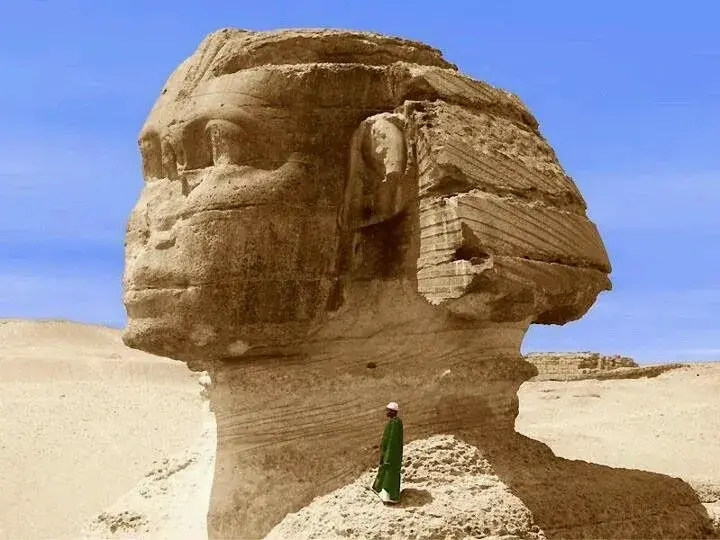
The Great Sphinx of Giza, with its missing nose, is an iconic image. But when did this damage happen? It's a question that has sparked many theories and debates. Here's what we know:
Not Napoleon!
Napoleon's soldiers are said by many to have shot off the nose of the Sphinx.. However, this is a myth! When they got to Egypt, the nose was already gone.
The 14th Century
Most evidence suggests the nose was damaged in the 14th century.
Who Did It?
Historical accounts refer to A Sufi Muslim named Muhammad Sa'im al-Dahr is often credited with destroying it.. He was protesting against idolatry.
Earlier Damage?
Some researchers believe the nose might have been damaged even earlier. But the 14th century is the most likely timeframe.
The missing nose is just one part of the Sphinx’s long and complex history, which includes natural wear and various human interactions. Despite the damage, the Sphinx stands strong as a symbol of ancient Egypt. Want to dive deeper into Egypt’s wonders? Check out this 7-Day Explore Classical Egypt, Cairo & Sharm El Sheikh Tour for an unforgettable journey.
And in case you're wondering, when was the Great Sphinx built? According to the majority of specialists, it originated during the time of Pharaoh Khafre, circa 2500 BC.
Can you go inside a sphinx?
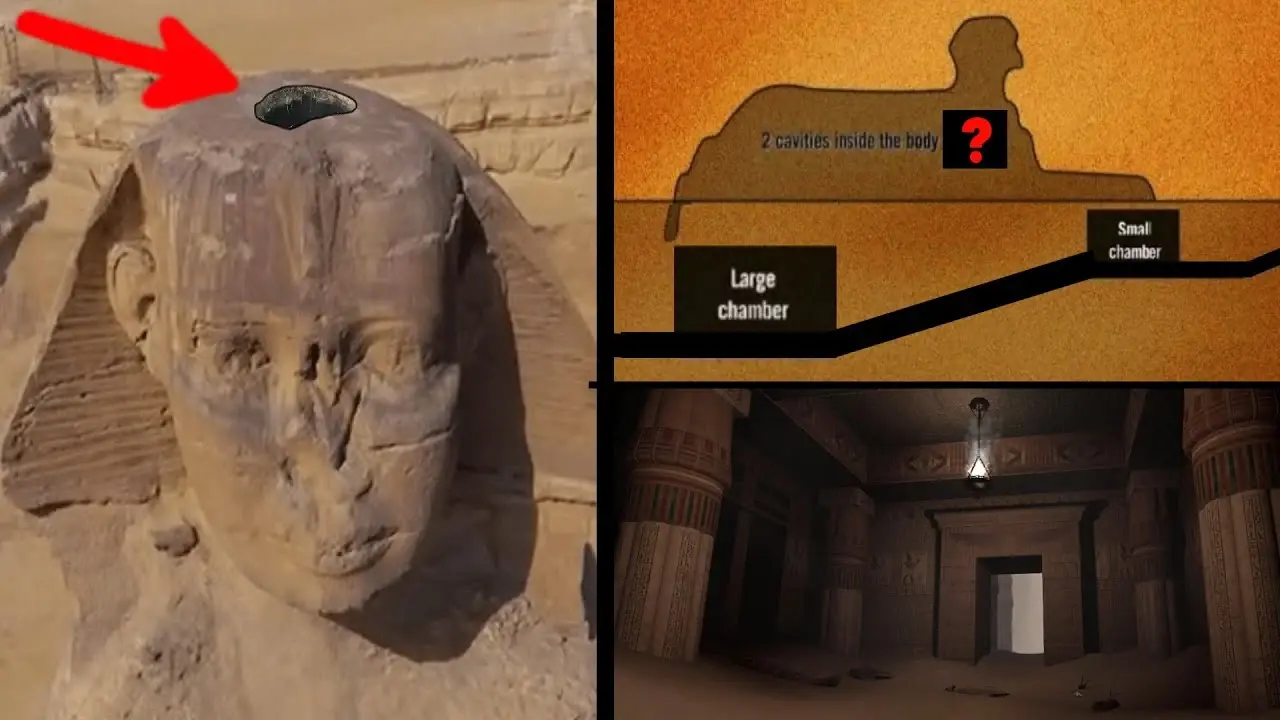
Can you go inside the Great Sphinx? It's a question many people ask! Here's the brief answer:
Generally, no: The Sphinx is not typically open to the public. There are no readily accessible entrances for tourists.
Hidden tunnels: However, there are tunnels and chambers inside the Sphinx. Some are natural, while others were built by the ancient Egyptians.
Not for exploring: Unfortunately, these tunnels are not open for exploration. They are mainly for research purposes.
Maybe someday? Perhaps in the future, some areas might be accessible to the public. But for now, you can only admire the Sphinx from the outside.
While you can't enter the Sphinx today, it remains an extraordinary sight full of mysteries. For an adventure through Egypt’s historic marvels, consider a 5-day Cairo and Alexandria tour , where you can explore nearby landmarks up close!
Read more about: Can You Go Inside The Great Pyramids
How old is the Sphinx?
The Great Sphinx of Giza has watched over the desert for thousands of years, capturing our curiosity with its age-old mystery. But just how old is this fascinating monument? Experts believe it dates back to around 2500 BC, during Egypt’s Old Kingdom. This was likely in the time of Pharaoh Khafre, whose pyramid is located nearby. Some say the Sphinx’s face might resemble Khafre’s, though no records prove this for sure. Even without exact dates, the Sphinx’s age is awe-inspiring—it’s seen over four millennia of history unfold, standing as a testament to the ancient Egyptians’ skill and ingenuity.
To dive deeper into Egypt’s wonders, you might explore an 11-day classic tour of Cairo, the Nile Cruise, and the Red Sea , which offers a closer look at iconic monuments like the Sphinx and more.
Read More: Is The Sphinx Older Than The Pyramids
Was the Sphinx built before the pyramids?
It's a question that often comes up when people marvel at the wonders of ancient Egypt. Was the Sphinx built before the pyramids? Here's what we know:
Probably Not
Most experts believe the Sphinx was built around 2500 BC, during the reign of Pharaoh Khafre. This places it in the Old Kingdom period.
Khafre's Pyramid
The Sphinx is located right next to Khafre's Pyramid at Giza. This suggests they were built around the same time.
Older Pyramids Exist
However, it's important to remember that other pyramids in Egypt predate both the Sphinx and Khafre's pyramids. The Great Pyramid of Giza, for example, is older.
A Complex Timeline
So, while the Sphinx wasn't built before all the pyramids, it wasn't the first monumental structure in Egypt. Egyptian history spans thousands of years, with many incredible structures built over time.
The Sphinx and the pyramids stand together as testaments to the ingenuity and architectural prowess of the ancient Egyptians. Everyone who sees them is still filled with surprise and astonishment.
Whose face is on the Sphinx?
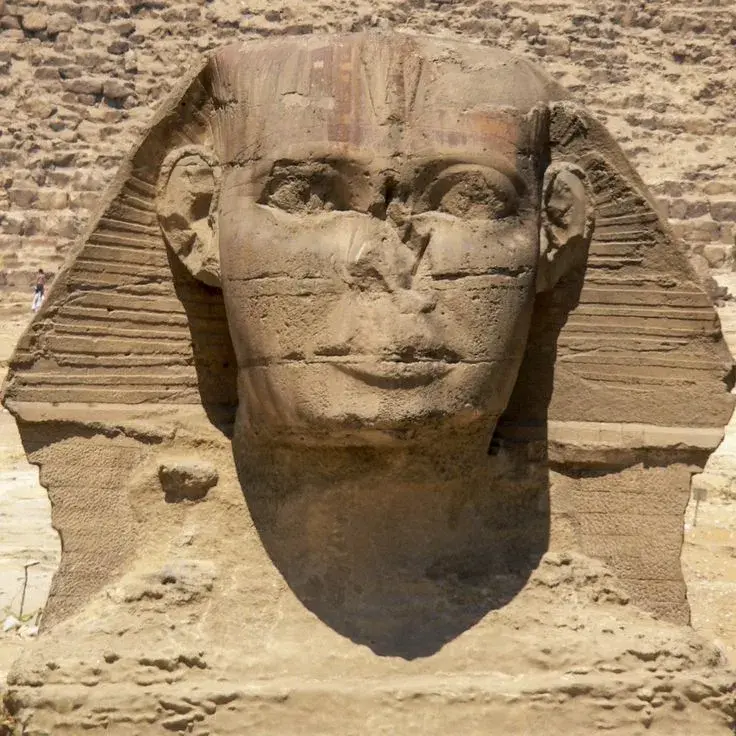
It's a question that has fueled much debate and speculation. Most experts believe the face belongs to Pharaoh Khafre, who ruled during Egypt's Old Kingdom around 2500 BC. Pharaoh Khafre's Connection:
The Sphinx is located next to Khafre's pyramid, suggesting a strong link between the two. Some statues of Khafre share similar facial features with the Sphinx, further supporting this theory.
No Definitive Proof
Despite the similarities, no inscriptions on the Sphinx confirm this theory, leaving some mystery around its true identity.
Symbol of Power
Regardless of whose face it is, the Sphinx symbolizes royal power, wisdom, and protection. Its calm, serene expression adds to its divine symbolism.
Alternative Theories
Some believe the Sphinx may represent the sun god, Ra, or even another pharaoh. Khafre is still the most commonly recognized idea, though.
Cultural Legacy
The Great Sphinx continues to inspire awe and wonder, representing the grandeur of ancient Egypt.
When was the Great Sphinx built? It was constructed around 2500 BC, during the reign of Pharaoh Khafre, marking one of Egypt's most iconic monuments.
Did the Sphinx Originate with Khufu? Exploring the Theories
The Great Sphinx of Giza is shrouded in mystery, and its origins are no exception. While most associate it with Pharaoh Khafre, some believe it may be linked to his father, Pharaoh Khufu. Let's delve into this intriguing theory:
Khafre's Claim
Most experts attribute the Sphinx to Pharaoh Khafre, who ruled around 2500 BC. This is based on its proximity to Khafre's pyramid and possible facial similarities.
Khufu's Connection
However, some researchers propose that Khufu, the builder of the Great Pyramid, might have initiated the Sphinx project. This is due to the Sphinx's location near the Great Pyramid and some stylistic comparisons.
Lack of Evidence
Despite these theories, there's no definitive proof linking the Sphinx to Khufu. No inscriptions or clear historical records confirm his involvement.
An Enduring Mystery
Whether it was Khafre or Khufu, or perhaps an even earlier ruler, the Sphinx remains a testament to ancient Egyptian ingenuity and artistry.
The Sphinx continues to captivate us with its enigmatic presence, inviting us to ponder its true origins and the stories it holds.
Read about: Is it Safe to Visit Pyramids of Giza
What is the best time to visit the Egyptian Plateau?
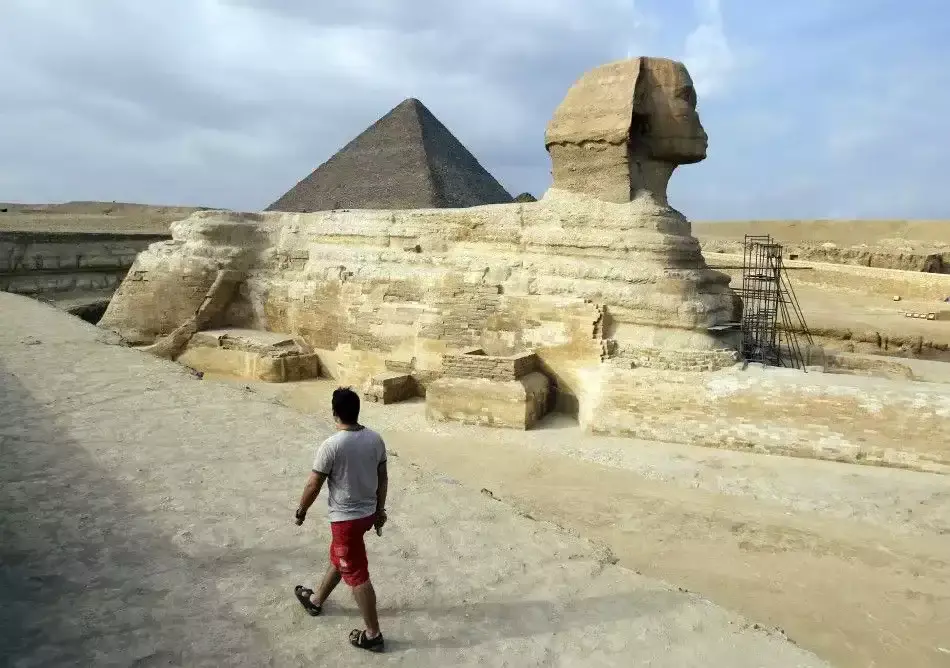
October to April
These months offer cooler weather, making it ideal for exploring the Giza Plateau and its iconic sites, including the Great Sphinx.
Milder Temperatures
During this period, the temperature is more comfortable, allowing for a relaxed experience of the outdoor sites.
Avoid the Summer Heat
Summer months from May to September can be intensely hot, often reaching over 40°C, making visits less comfortable.
Fewer Crowds
Visiting in early spring or late autumn lets you enjoy a quieter experience with fewer tourists.
deal Lighting
Sunrise or sunset hours are magical times to visit, providing beautiful lighting for photography and a more peaceful atmosphere.
Weekdays for Fewer Crowds
Plan your visit on a weekday if possible; weekends can be busier.
Festivals and Events
Winter months often feature cultural events, enriching your experience with local traditions and celebrations.
With a bit of planning, October to April offers the perfect conditions to enjoy the Giza Plateau and the Great Sphinx, creating memories that will last a lifetime.
Read more: What are the important holidays in Egypt ?
What Was The Original Name Of The Sphinx
It's a question that takes us back to ancient Egypt. Here's what we know:
No single answer: Firstly, it's important to note that there isn't one definitive answer. The Sphinx has been known by different names throughout history.
Early names: In the Old Kingdom, it was likely called "Hor-em-akhet." This means "Horus of the Horizon." This name connects the Sphinx to Horus, the god of the sky and kingship in ancient Egypt.
Later names: Later, it became known as "balhib" and "bilhaw." These are Arabic terms meaning "the terrifying one."
The Sphinx today: Today, we use the Greek term "sphinx." This refers to a mythical creature with a lion's body and a human head.
So, while the Sphinx's original name remains somewhat uncertain, its enduring presence continues to fascinate us.It represents the strength and mystique of ancient Egypt.
Summary
When was the Great Sphinx built? This ancient marvel continues to intrigue and captivate with its mysteries. Whether you're planning a visit or simply fascinated by its story, Egypt Online Tour can help guide you through the wonders of the Giza Plateau. Don't miss out on experiencing the Sphinx and uncovering its secrets firsthand. Ready to explore the magic of the pharaohs? Visit our Egypt tour packages and start your unforgettable adventure today, Do not wait to take a look at Egypt Classic Tours
What was the Sphinx's original name?
Unfortunately, we don't have any written records of its very first name. But during the New Kingdom period, it was called "Hor-em-akhet," which means "Horus of the Horizon."
Why do people associate the Sphinx with Pharaoh Khafre?
There are a couple of reasons. Firstly, the Sphinx sits right next to Khafre's pyramid at Giza. This suggests they were built around the same time. Secondly, some people think the Sphinx's face looks like Khafre's. However, there's no inscription or ancient text that confirms this
But some pyramids are older than that, right?
Absolutely! The Great Pyramid of Giza, for example, was built by Khafre's father, Khufu, and it's older than the Sphinx. So, while the Sphinx is ancient, it wasn't the first pyramid built in Egypt.
Can visitors see the Great Sphinx today?
Yes, the Great Sphinx is open to tourists visiting the Giza Plateau in Egypt. Visitors can get a close-up view of the Sphinx and explore the surrounding archaeological sites, including the Pyramids of Giza.
Popular Categories
Popular Posts

Top Alexandria Beaches You Must Visit 2026

What are the important holidays in Egypt?


